I came to the beautiful Snake River Canyon in Idaho to find one of the fastest creatures
in the world, the prairie falcon, a raptor that nests on the high cliffs.
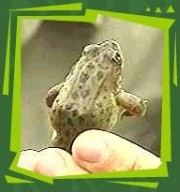
I started my adventure by the river where I caught a spotted frog. I washed my hands
before picking it up, since amphibians breathe through their skin and can get hurt by
contact by anything that could clog their membranes.
Remember how I washed my hands before I picked up that spotted frog? That's incredibly
important for the frog because it has cutaneous (skin) respiration. But there is another
reason I wash my hands: the frogs probably appreciate it when you have wet hands since
dry hands can scratch the frog's skin.
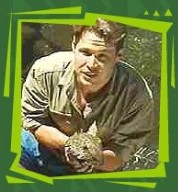
Upstream , I picked up a beaver, another river denizen which actually makes it's home with
wood and mud - the beaver lodge or dam. Beavers have to swim underwater to enter a lodge,
but they are well adapted to a watery life, with their flat tails. Their sharp inscisors
let them cut wood pieces to make their homes.
That beaver I saw was only maybe 30 days old. Though it was young, it's teeth were
already natural buzzsaws. A family of beavers might live in their lodge for 10 years
or more.
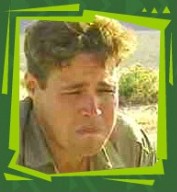
Heading to higher ground, I spotted a Townsend's ground squirrel, an important clue that
the raptors I was looking for were very close. The reason: the raptors love eating those
squirrels. The native Americans have harvested ants for food - and you know me, I had to
try them. I found an ant mound and ate a few - but I forgot how they sting. The taste
was really bad!
Those ants tasted horrible, and I shouldn't have been surprised, since ants produce formic
acid. That made for a bitter, stinging taste on my tongue.
A horned lizard popped up and I picked it up to look at it's amazing defence system. This
lizard squirts blood at it's attacker right through it's eye! I picked up an American
badger pretty easily though they can be pretty aggressive. The badgers make 30 foot
tunnels in the ground.
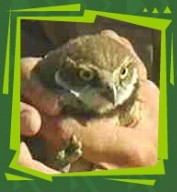
Nearby, a burrowing owl used it's different defense mechanism - it made it's sound, which
imitates a rattler's!
The burrowing owl's strange noise isn't it's only survival mechanism. If food is plentiful,
it lets it's babies live -- but in time of scarcity the burrowing owl will eat it's own
young!
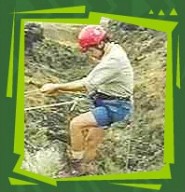
Finally I got to the upper plateau of the beautiful canyon. I saw a golden eagle soaring
overhead, the largest raptor in North America. Across the canyon, I saw the white droppings
from the prairie falcons - and it was time for my rope climb!
I have climbed before so, while I was nervous, I wasn't inexperienced. But what you don't
see is that one of the knots to my carabiner, to one of my clips, was loose. I had to
unhook the rope from my D-ring and retie it -- all while hanging from the cliffs!
-Totally Wild,
Jeff
Back to Jeff's Journals